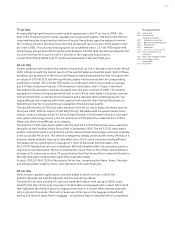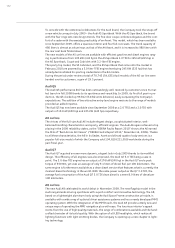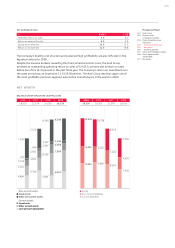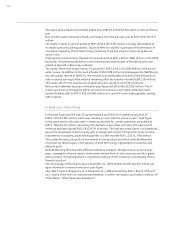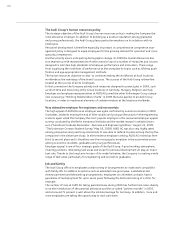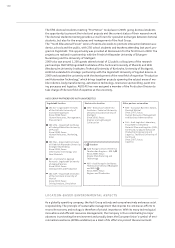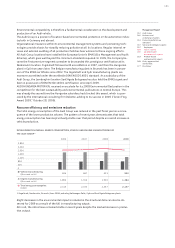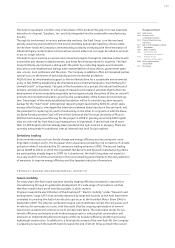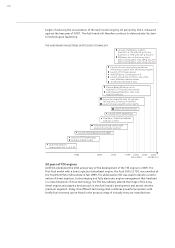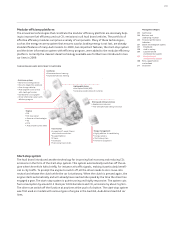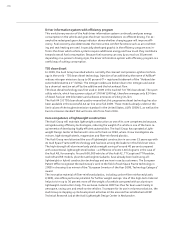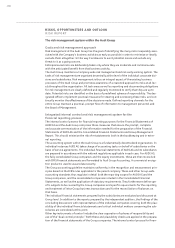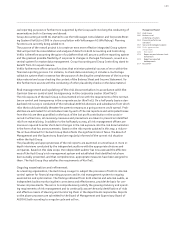Audi 2009 Annual Report Download - page 164
Download and view the complete annual report
Please find page 164 of the 2009 Audi annual report below. You can navigate through the pages in the report by either clicking on the pages listed below, or by using the keyword search tool below to find specific information within the annual report.
161
Management Report
132 Audi Group
140 Business and
underlying situation
153 Financial performance
indicators
157 Social and ecological aspects
157 Employees
159 Audi in society
160 Location-based
environmental aspects
163 Product-based
environmental aspects
168 Risks, opportunities
and outlook
177 Disclaimer
Environmental compatibility is therefore a fundamental consideration in the development and
production of an Audi vehicle.
The Audi Group is a pioneer of location-based environmental protection in the automotive indus-
try both in Germany and abroad.
Organizational measures within its environmental management systems and pioneering tech-
nologies provide a basis for steadily reducing pollution at all its locations. Regular internal re-
views and external auditing of all production facilities bear witness to these ongoing efforts.
All Audi Group locations have installed the European Union’s EMAS (Eco Management and Audit
Scheme), which goes well beyond the minimum standards required. In 1995, the Company be-
came the first premium-segment carmaker to be awarded this prestigious certification at its
Neckarsulm location. Ingolstadt followed with accreditation in 1997, and then the Hungarian
plant in Győr two years later. The Belgian manufacturing plant in Brussels has been in posses-
sion of the EMAS certificate since 2002. The Ingolstadt and Győr manufacturing plants are
moreover accredited under the worldwide DIN EN ISO 14001 standard. As a subsidiary of the
Audi Group, the Lamborghini location Sant’Agata Bolognese has also held the EMAS signet and
been in possession of DIN EN ISO 14001 certification since April 2009.
AUDI HUNGARIA MOTOR Kft. received an accolade for its 2008 Environmental Declaration in the
competition for the best sustainability and environmental publications in Central Europe. This
was already the second time the Hungarian subsidiary had clinched this award, which is spon-
sored by the international consulting firm Deloitte, adding to its success in 2006 (“Green Frog
Award 2009,” October 28, 2009).
Resource efficiency and emissions reduction
The total energy consumption of the Audi Group was reduced in the past fiscal year as a conse-
quence of the lower production volume. The pattern of recent years demonstrates that total
energy consumption has been kept virtually stable over that period despite an overall increase in
vehicle production.
DEVELOPMENT IN OVERALL ENERGY CONSUMPTION, VEHICLE AND ENGINE MANUFACTURING BY
THE AUDI GROUP 1)
Vehicle manufacturing
(thousand units)
Engine manufacturing
(thousand units)
867
1,916
2,193
953
1,902
2,337
902
1,384
2,157
Total energy consumption
(GWh)
826
1,896
2,156
800
400
0
2009200820072006
2,400
2,000
1,600
1,200
2,800
1) Ingolstadt, Neckarsulm, Brussels (from 2008; excluding Volkswagen Polo), Győr and Sant’Agata Bolognese plants
Slight decreases in the environmental impacts included in the structural data can also be ob-
served for 2009 as a result of the fall in manufacturing output.
All in all, the ratios have remained stable in recent years despite the marked increase in produc-
tion output.


